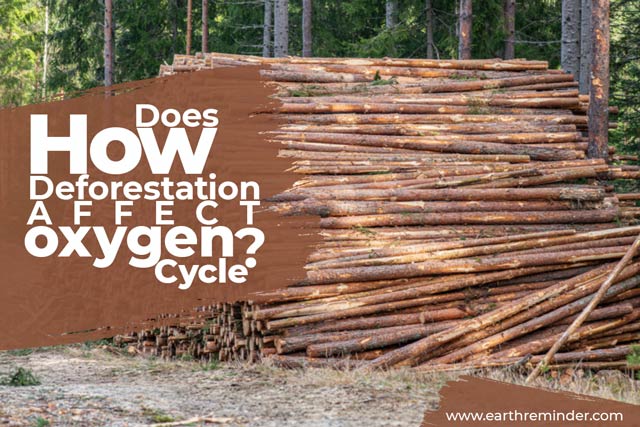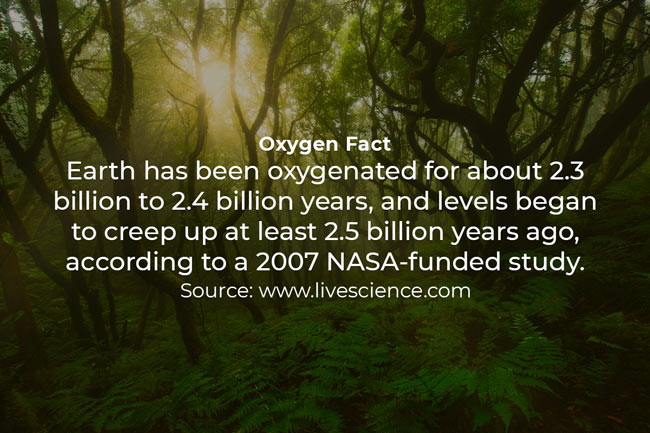How Does Deforestation Affect the Oxygen Cycle?
How Deforestation Affects the Oxygen Cycle? – Introduction:
Earth is rapidly losing its green cover, and deforestation is the primary cause. Human greed has drastically affected the natural balance of our planet, stripping off its tree cover, sucking all its natural resources and poisoning the environment and ecosystem. Earth had lost so much of its forest that its adverse effects are now posing a threat to human existence.
The loss of trees through deforestation has totally disrupted the crucial oxygen cycle, a vital component, indispensable to human existence. On the one hand, deforestation is a significant problem for the environment. On the other hand, cutting down trees also causes the degradation of other natural resources, like soil and water. This article will highlight how deforestation is detrimental to the atmosphere and how it puts the delicate oxygen cycle into disarray.
Table of Contents
What Role Do Trees Play in The Oxygen Cycle?
Oxygen makes up 21% of the Earth’s atmosphere. It is a colorless as well as odorless (fragrance-free/ smell less) reactive gas. Nearly all living beings on Earth need oxygen to survive. The oxygen cycle denotes the process with which the environmental oxygen is replenished, and the current percentage of oxygen is maintained in the atmosphere. Trees play an essential role in the oxygen cycle. They take in the carbon dioxide exhaled by the living organisms and use it for the process of photosynthesis, producing energy and releasing oxygen into the atmosphere.
How Does Deforestation Lead to Less Oxygen in The Atmosphere?
Deforestation is the process of cutting down trees and clearing forests to make use of the land for agricultural or other activities. The rate of clearing forests is way more rapid than regrowing of the trees, which leads to a significant loss of green cover.
Deforestation significantly affects the oxygen cycle. Trees take in carbon dioxide and traps it into tissues and soil while at the same time releasing oxygen into the atmosphere. The removal of trees significantly reduces the rate of this process, resulting in higher carbon dioxide in the atmosphere and lower natural oxygen levels.
According to an estimate, an acre of tree cover produces enough oxygen for eight people while removing around 85 kilograms of CO2 from the atmosphere. Reduced tree cover destabilizes the balance between CO2 and O2. This impacts the oxygen cycle, which leads to less oxygen in the atmosphere.
Besides many other functions, trees play an important role in stabilizing the oxygen cycle as forests absorb and store carbon. When we remove trees, the carbon stored in them is released into the air as CO2 disturbing the environmental balance.
How Is the Oxygen Cycle Disturbed by Deforestation?
As discussed above, Earth’s atmosphere is composed of 21% oxygen and is vital to life on the planet. Deforestation disrupts the oxygen cycle. If fewer trees are in an area, the result will be more carbon dioxide and less available oxygen. If we continue to destroy trees, we risk further damaging the air quality.
When forests are severely depleted, there is a lack of photosynthesis – the oxygen churning machinery of plants and trees. Less photosynthesis means less oxygen is released into the atmosphere. Moreover, deforestation also leads to the release of carbon trapped in the soil, further adding CO2 into the atmosphere and depleting oxygen.
Thus, we see that trees are critical in maintaining the oxygen level in the atmosphere, and deforestation leads to a severe shortage of oxygen, disturbing the oxygen cycle.
How Does Deforestation Affect Air Quality?
Deforestation also affects the air. Lack of oxygen and increased levels of CO2 leads to the acidification of the atmosphere, which causes several problems for living beings. Hence, continued deforestation adversely affects the world’s air quality.
However, since the 1700s and early 1800s, more greenhouse gasses have been released into the air and they are not being removed as effectively because of fewer trees. According to estimates, the tree cover in the US is so severely depleted that in 2011, the United States’ forests were able to remove only 14% of the carbon dioxide emitted into the atmosphere.
It’s evident that shrinking forest cover leads to more CO2 into the atmosphere, increasing the pH level and contributing to global warming. Also, In the absence of proper oxygen, the air would be unsuitable for breathing, drastically affecting all life forms on our planet.
Reforestation is the only way to stabilize the oxygen cycle. Reforestation is a great solution for stabilizing the environment and can be done artificially or naturally through seeding.
Conclusion and Summary
Deforestation indeed harms the oxygen cycle; therefore, it’s essential to understand the detrimental effects of deforestation and its impact on the ecosystem. During the process of photosynthesis, trees take carbon from the air, use it to produce energy and release oxygen while storing some of it in their tissues.
The absence of these trees would increase the amount of carbon in the atmosphere and lower the amount of oxygen. Thus, deforestation alters the oxygen cycle.
Additionally, the forests help regulate the oxygen cycle, controlling evaporation, precipitation, and other aspects of the oxygen supply. So, it is essential to save them.

